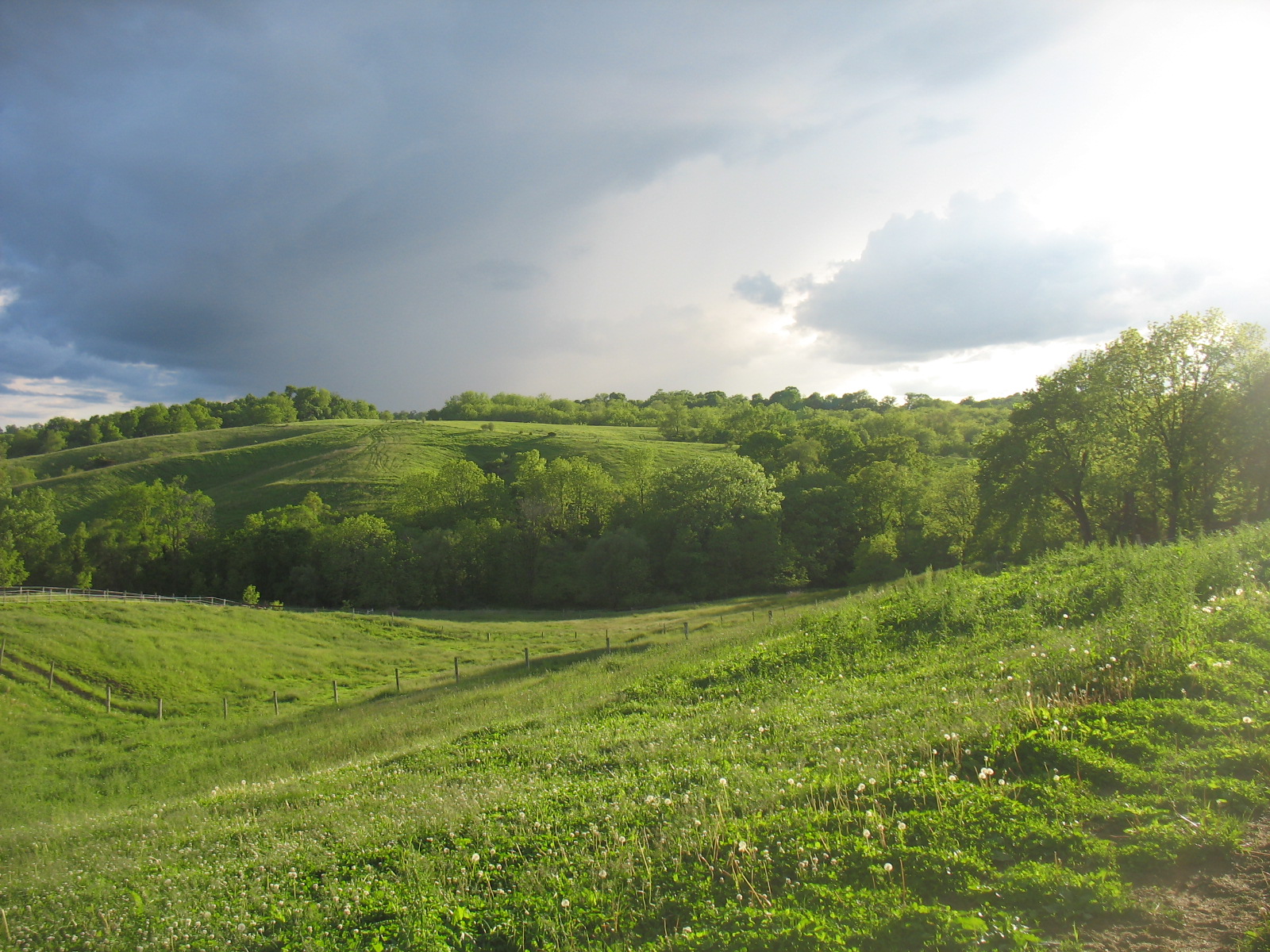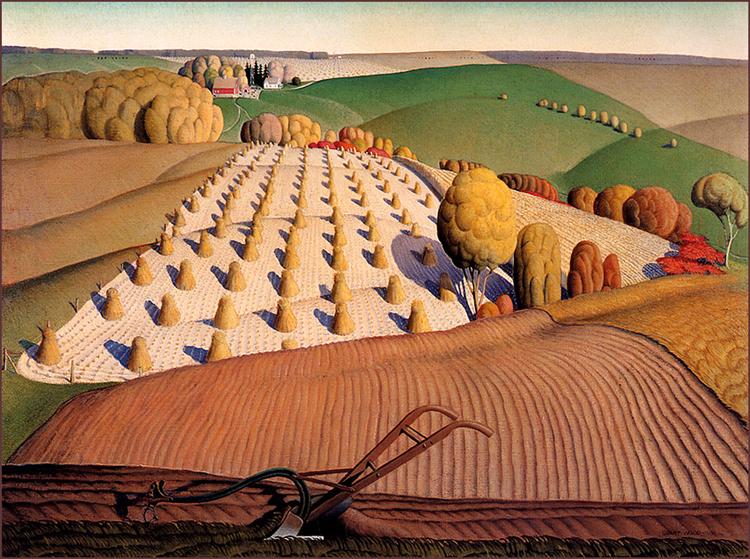Everyday Elements of Landscapes Matter
Posted on July 26, 2016 in Blog

The rolling hills of Cindy and Kevin Burke's Linn County landscape.
For Cindy and Kevin Burke, the motivation for permanently protecting land they own in the hill country of Linn County stems from their dedication to paying attention to, valuing, and lifting up the richness of the everyday elements of the landscape in which they live.
As it turns out, some of the elements of that landscape are not so everyday.
Regionalist artist Grant Wood was a frequent visitor to Linn County’s hills. Cindy heard a lot of local lore from neighbors when she was a girl, including how the famous Depression-era artist had painted on land her parents came to own and stayed in the house at the end of their road.
Wood, champion of ordinary people and landscapes, painted the scenic fall landscape “Fall Plowing” in 1931. He found a fitting background in what was then the Drumbarger farmstead and a suitable vantage point for capturing the bucolic scene from a hilltop on what is now the Burkes’ property. Eighty-five years later, the landscape as viewed from that hilltop still bears a striking resemblance to Woods’ view depicted in Fall Plowing … and the barn is still standing.

"Fall plowing,"a 1931 painting by Grant Wood, is part of Deere & Company's permanent corporate art collection. Considered one of Wood's most famous works, "Fall Plowing" is on display through June 2016 at the Figge Art Museum in Davenport.
Quick action preserved a significant landscape
In the late 1990s, Linn County planned to site a county landfill in their neighborhood which would have compromised what the Burkes suspected were the culturally significant aspects of their land, involved the condemnation of two neighboring family farms and possibly impacted hundreds of acres of publicly owned conservation lands. Cindy and Kevin countered quickly and established the Matsell Area Preservation and Protection group and took steps to have their land registered as a National Historic Landscape. The Grant Woods Fall Plowing Rural Historic Landscape District was listed officially on the National Register of Historic Places in 2003. Cindy recalled how “Those two endeavors crystallized our passion for conserving what is often overlooked, taken for granted or forgotten.”
For Cindy that passion was kindled in her childhood. “Our family mushroom hunted all over eastern and southern Iowa. I came to love the timbered hillsides and the rivers. I was fascinated by old farmsteads we stumbled onto that had gone to ruin — that time had forgotten. I saw so many of these old places demolished and thought of all the work of women that was ultimately covered over. I wanted to continue the legacy of their work that signified the place they called home.”

Left to Right: Al Gates (Cindy's brother), Cindy Burke and Kevin Burke display their bountiful morel harvest from the Burke's land.
Heritage gardens are a window to the past
Her desire to continue that legacy has played out in the heritage gardens at the Burke homeplace. The gardens feature more than 500 hosta species, a few hundred species of day lily, scores of iris varieties and ferns of all kinds that Cindy has collected over the years, as well as four lady slippers her brother rescued from a timber that was being leveled.
“Poking around those farmstead ruins I found lovely, often huge patches of happy flowers and I told myself that one day, when I had my own place, I would collect these beauties and those of my mom’s friends and relatives. I thought about the women tending to the gardens and imagined they’d be happy to think someone made the effort to carry on the tending of what they’d enjoyed in their lifetimes. It thrills me to think of the miles these plants have traveled and survived and that I could be a part of carrying on their legacy and that now, they can thrive long into the future.”
The assurance that the everyday elements of their hill farm will forever thrive stems from the Burkes opting to permanently protect their land by will bequest and through conservation easements with Iowa Natural Heritage Foundation and the Linn County Conservation Board. The will bequest and easements serve to preserve the biodiversity and wildlife habitat of the land as well as the aesthetic, environmental and other non-economic values for posterity.
It circles back to this for Cindy and Kevin — the everyday elements of landscapes matter.
The setting for Grant Wood’s “Fall Plowing”; the love women held for their flower gardens; the diligence that Cindy’s parents expressed as they assembled parcel by parcel the property that is now in her and Kevin’s care; the habitat this now-protected property provides for all manner of wildlife including predatory animals; the way their land fits into and complements the adjacent public Matsell Bridge Natural Area and the even more extensive Wapsipinicon River corridor. Every element matters.
They matter because they are integral parts of a whole. And Cindy and Kevin are committed to not only continuing but expanding their contributions to maintaining the whole — conserving what is often overlooked, taken for granted, forgotten — on land they own, as well as by encouraging more land protection in their neighborhood and in the farther reaches of the Wapsipinicon River.
As Cindy sees it, “We may not be able to do much about the ‘state of the world.’ There is much, however, we can do here — at home.